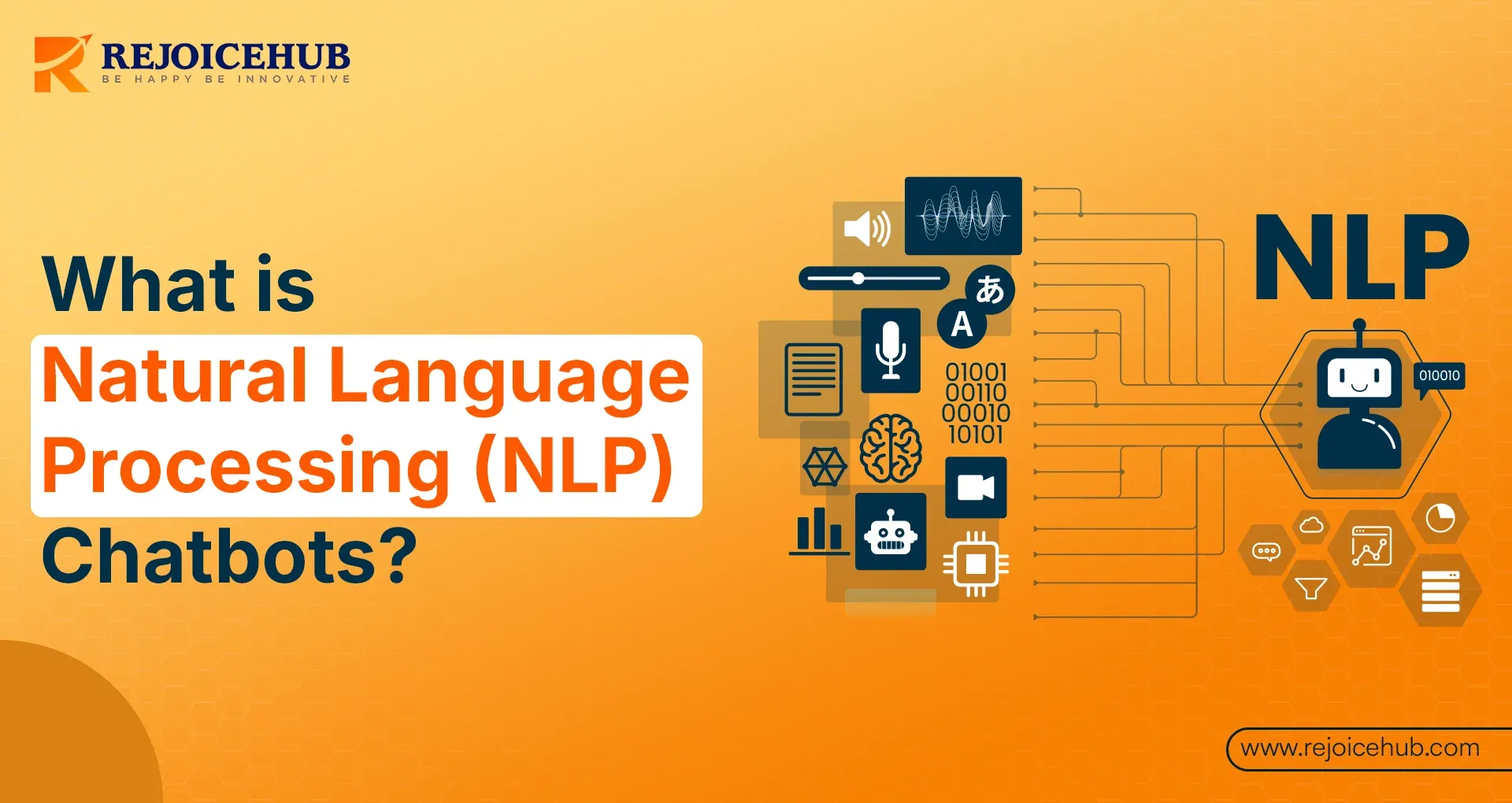
You've likely interacted with ChatGPT or any other chatbot at some point, and you've probably noticed how these AI chatbots or platforms understand our language so well and respond to us as naturally as a friend. The best part is that conversing with an AI chatbot is as easy as interacting with a human, with no rigid commands or confusing menus to select from.
The main reason behind AI Chatbots or LLMs models like ChatGPT, Grok, Perplexity becoming so popular and accessible today is NLP (Natural Language Processing). Due to this, AI Chatbots are able to understand human language. In the last few years, NLP based AI-powered conversational agents have started being used even for business purposes, which is the fastest evolving sector of the human era.
Nowadays, NLP is being used extensively in important sectors ranging from banking, healthcare to e-commerce and education. Chatbots are transforming a lot due to NLP, which is making human interaction with machines much smoother.
I've personally spent a significant amount of time using NLP-based tools, and I'll try to share my experience with you about what NLP is, how it works, and how you can implement it for your business purposes.
Quick Summary
The AI tools and agents we see today would never have become so popular and accessible without NLP, as machines only understand structured language or data, not human language and pronunciation. Natural Language Processing (NLP) has effectively broken this barrier, enabling humans to converse with AI agents. NLP is a complex term within the artificial intelligence sector, encompassing many layers and types.
Furthermore, NLP will continue to evolve even in 2025, which will often present challenges for developers to address. Many experts say that the use cases for NLP are flexible enough that we will see NLP in almost all industries in the next few years.
Our Focus in this article:
1. What is Natural Language Processing (NLP) and how does it work?
2. What are the use cases and core benefits of NLP?
3. How is NLP being used in the business world today?
4. What challenges do we have to face in NLP and what are its future trends going to be.
Bonus Tip: At the end of the article, I will tell you how you can choose the right partner firm for your business.
What is an NLP Chatbot?
Let's try to explain NLP in simple terms. Basically, an NLP Chatbot is a type of conversational AI program designed to understand human language naturally and provide a final response accordingly. Basic bots are designed based on pre-programmed keyword triggers, while NLP Chatbots use artificial intelligence, specifically Natural Language Processing, to interpret meaning, detect intent, and generate appropriate replies.
For example: Let's understand NLP or pre-trained bots with a simple example. You can think of a pre-trained bot as a vending machine, which offers fixed and basic options. Upon selecting an option and making the payment, you receive your cold drink or requested item; you don't get any custom options.
You can also think of Alexa or Google Assistant as NLP, which processes the final output based on real-time information and has no limitations on information or updates. Pre-trained bots focus on repetitive tasks, while NLP supports real-time, human-like conversations.
What are Chatbots?
NLP is a very complex part of artificial intelligence, and today's modern NLP has evolved thanks to chatbots, so let's first understand what chatbots are. Chatbots are a type of software program that simulates a conversation with a user through text or voice. All versions of chatbots are purely rule-based, requiring you to give specific types of commands and mostly giving fixed responses. This can be considered a kind of interactive and fixed FAQ page.
Nowadays, AI and machine learning have been integrated into chatbots, and they have evolved into powerful virtual assistants, whether managing bookings or troubleshooting technical issues. Chatbots are also widely used in emotional support therapy. Chatbots are evolving from simple scripts to intelligent learning systems.
How Does a Natural Language Processing Chatbot Work?
Behind the friendly interface, NLP chatbots perform a sophisticated sequence of steps to transform raw user input into a meaningful response:
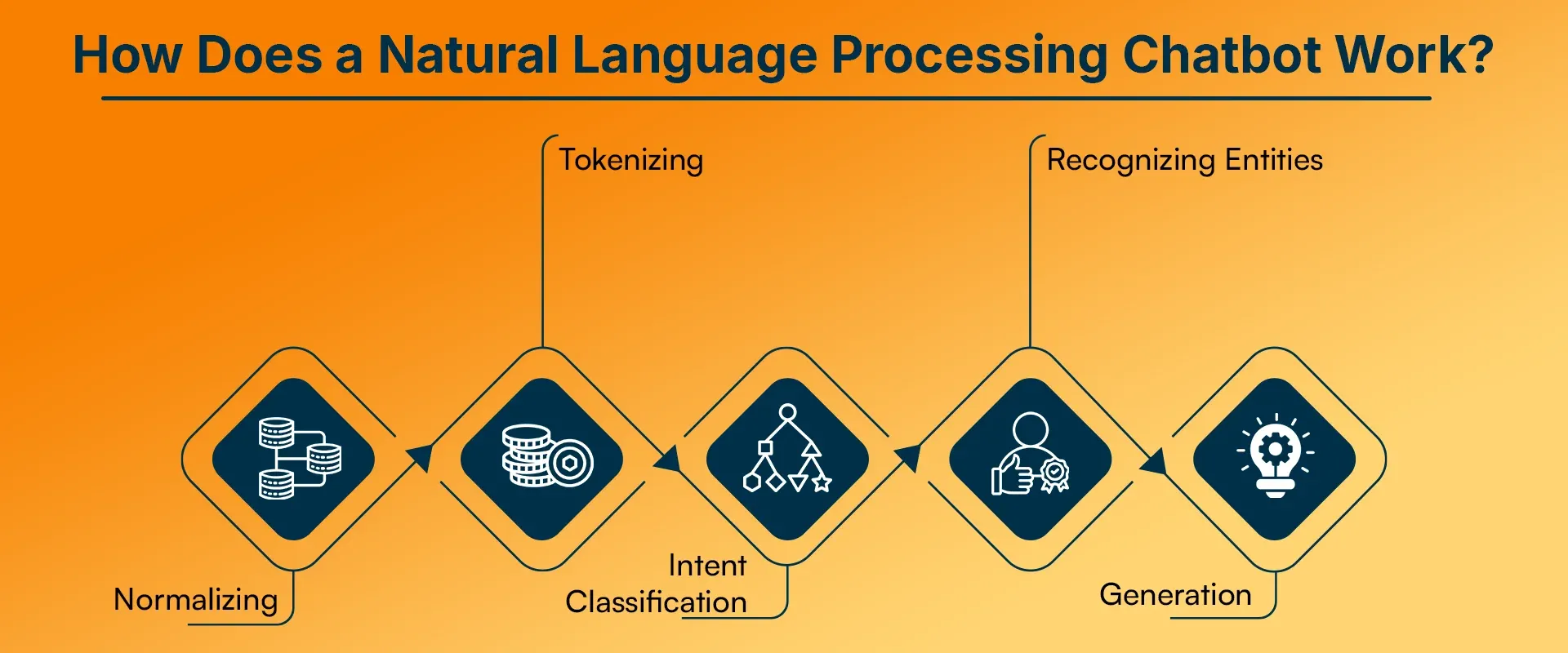
1. Normalizing
First, the chatbot cleans and standardizes the text. This includes lowercasing words, correcting spelling mistakes, and stripping out unnecessary punctuation. Normalization ensures the bot treats “HELLO!!!” and “hello” exactly the same.
2. Tokenizing
Next, the text is tokenized, meaning it’s broken into small units, typically words or phrases, called tokens. Tokenization helps the bot analyze each piece of the sentence separately.
3. Intent Classification
This is the heart of NLP. The chatbot uses machine learning models to identify the user’s intent, for example, whether they want to check an account balance or book a flight. Intent recognition allows the bot to understand meaning, not just words.
4. Recognizing Entities
Often, users provide details like dates, locations, or names. Entity recognition extracts these specifics, like “New York” or “next Friday”, so the bot can use them in its response.
5. Generation
Finally, the chatbot generates a natural reply. This might be a pre-written response or, in the case of advanced generative models, a completely new sentence crafted on the fly. Large language models (LLMs) like GPT have taken this step to a whole new level of fluency.
Different Types of NLP Chatbots
Artificial intelligence is used in different sectors, and as we know that there are requirements of dedicated systems and intelligence to handle different tasks, hence different types of designs are done in NLP for dedicated proposal.
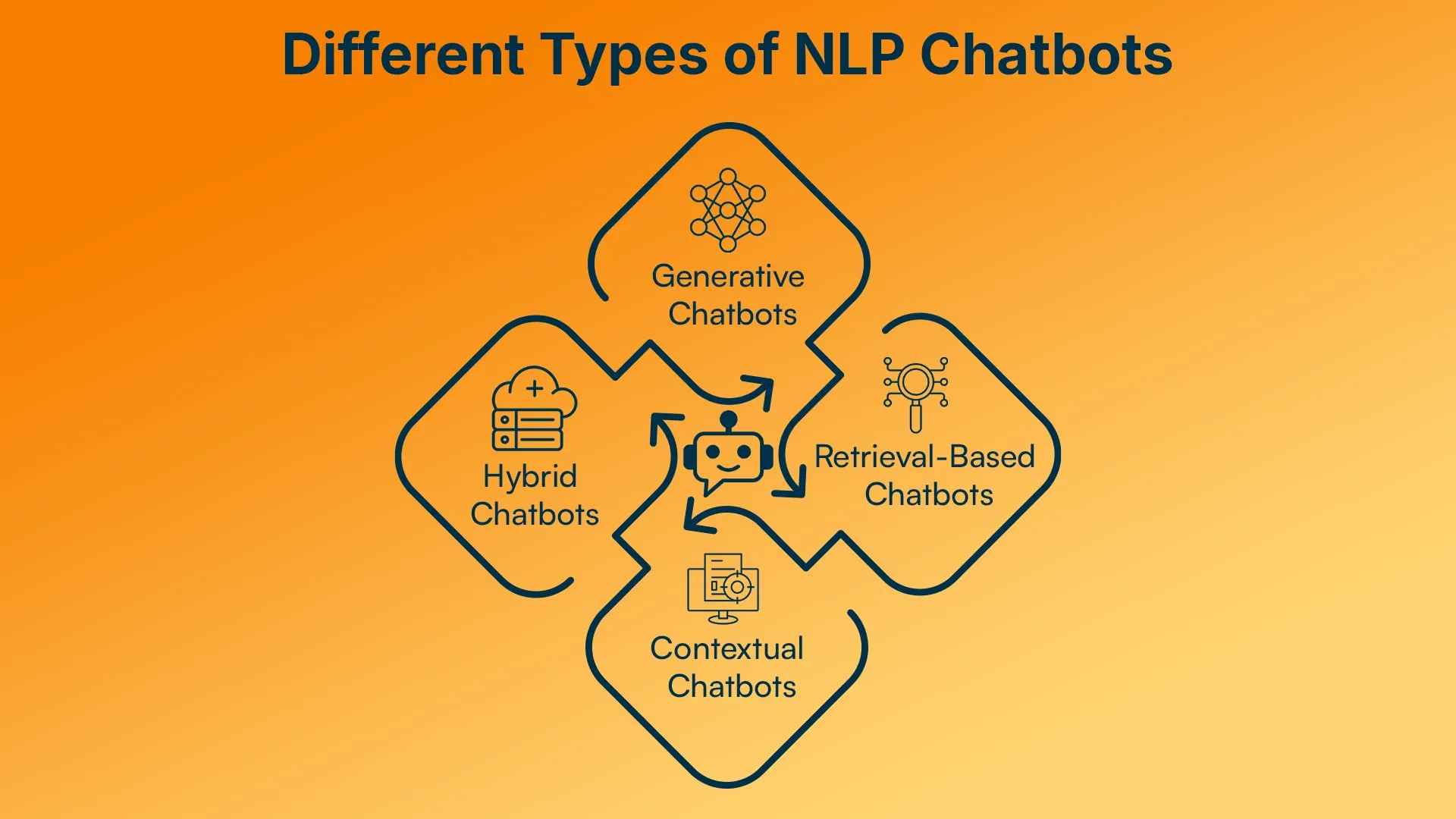
-
Generative Chatbots
These chatbots create responses from scratch using large language models. They don’t just retrieve pre-written answers; they generate original text based on context. Tools like ChatGPT and other cutting-edge LLMs fall into this category, offering dynamic, human-like dialogue.
-
Retrieval-Based Chatbots
Instead of generating text, these bots pick the best response from a predefined set. By leveraging intent recognition and content matching, they ensure consistent and accurate replies. They’re great for customer service scenarios where accuracy is critical.
-
Contextual Chatbots
Contextual bots remember past interactions and maintain conversation history, making them ideal for multi-turn dialogues. If you’ve ever used a virtual assistant that “remembers” your last question, you’ve experienced a contextual chatbot in action.
-
Hybrid Chatbots
As the name suggests, hybrid chatbots combine rule-based methods with NLP and machine learning. They can handle both predictable queries and open-ended questions, giving businesses the best of both worlds.
Also read: What is an AI Assistant? Types, Benefits, and Future Trends
Benefits of NLP Chatbots
All the businesses that have used NLP for customer support have saved 30% of their customer support costs, this tells us a lot about the potential of NLP, let us know about the benefits of NLP in detail.
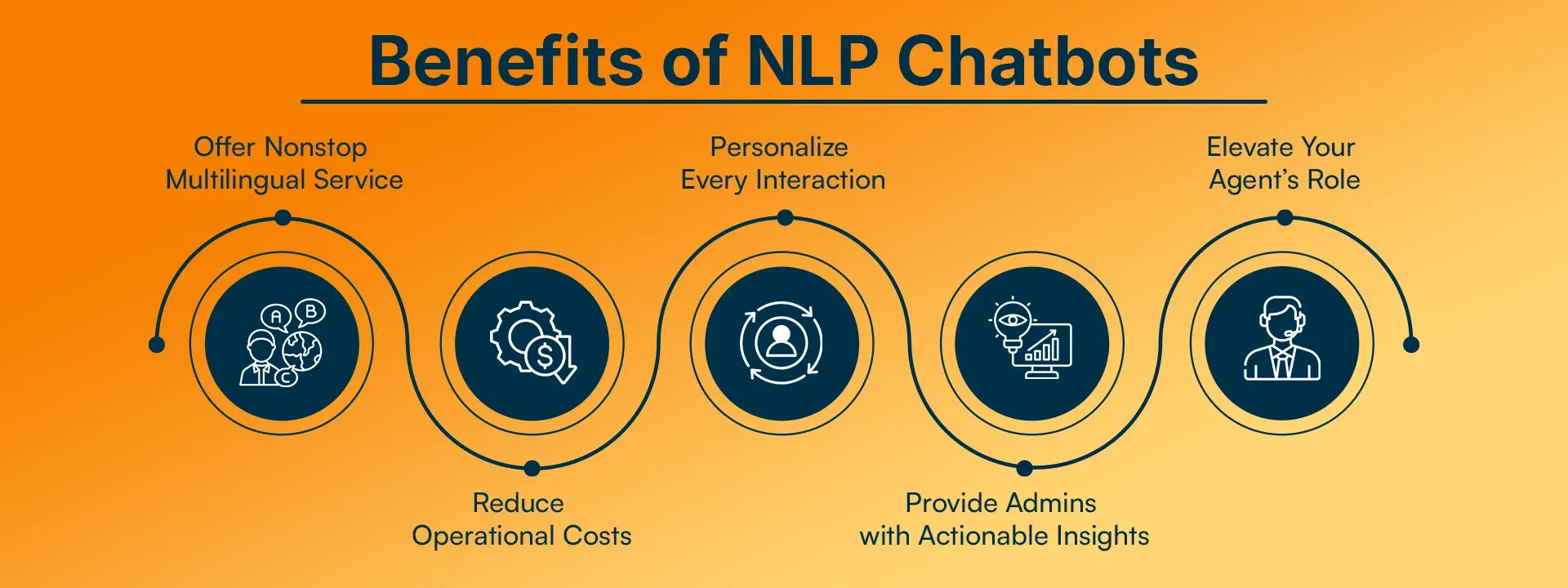
1. Offer Nonstop Multilingual Service
NLP chatbots operate 24/7 and can support dozens of languages without hiring multilingual staff. Whether your customer speaks English, Spanish, or Hindi, the bot can understand and respond instantly.
2. Reduce Operational Costs
By automating repetitive inquiries, companies can save significantly on labor. Studies show businesses using AI-powered chatbots have reduced customer service costs by over 50%.
3. Personalize Every Interaction
By connecting with backend systems such as CRMs, NLP chatbots can access user history and preferences. This allows them to deliver truly personalized experiences, like greeting a returning customer by name or recommending products based on past purchases.
4. Provide Admins with Actionable Insights
NLP bots collect valuable data on customer behavior and pain points. This analytics goldmine helps managers improve products, optimize services, and make data-driven decisions.
5. Elevate Your Agent’s Role
By handling routine questions, NLP chatbots free up human agents to focus on complex, high-value tasks. Your support team shifts from being overwhelmed by repetitive issues to becoming strategic problem-solvers.
Best Uses of NLP Chatbots
Natural language processing is going to be used in almost all sectors in 2025, and whether it is repetitive tasks or complex operations, NLP is handling all the tasks quite efficiently. If you also want to use NLP in your business, then let's learn about its major use cases.
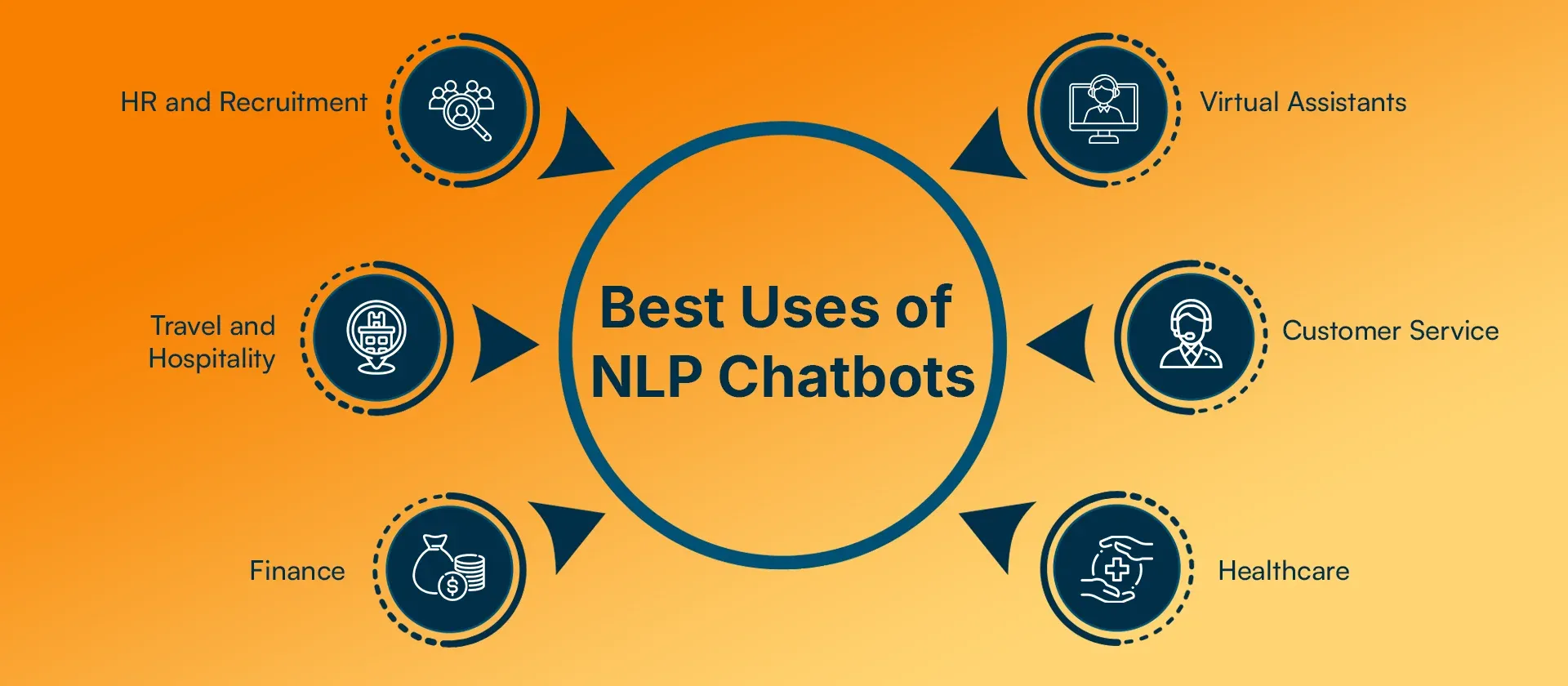
-
Virtual Assistants
Think Alexa, Siri, or Google Assistant, virtual helpers that can schedule meetings, set reminders, or control smart devices with natural speech.
-
Customer Service
From e-commerce to telecom, NLP chatbots handle customer support tickets around the clock, offering quick resolutions and improving satisfaction.
-
Healthcare
Hospitals and telemedicine providers use NLP chatbots for patient engagement, symptom checking, and appointment scheduling.
-
Finance
Banks deploy chatbots to assist with account inquiries, bill payments, and financial advice, giving customers secure, round-the-clock support.
-
Travel and Hospitality
Airlines and hotels rely on chatbots to book tickets, provide itinerary updates, and offer local recommendations.
-
HR and Recruitment
In HR, chatbots screen resumes, schedule interviews, and answer candidate questions, automating tedious tasks for recruiters.
Key Challenges of NLP Chatbots
NLP Chatbots or systems are still evolving, hence developers and businesses may face a lot of challenges if NLP or automation is deployed through inexperienced firms other than trusted firms like RejoiceHub, let us understand this in a little detail.
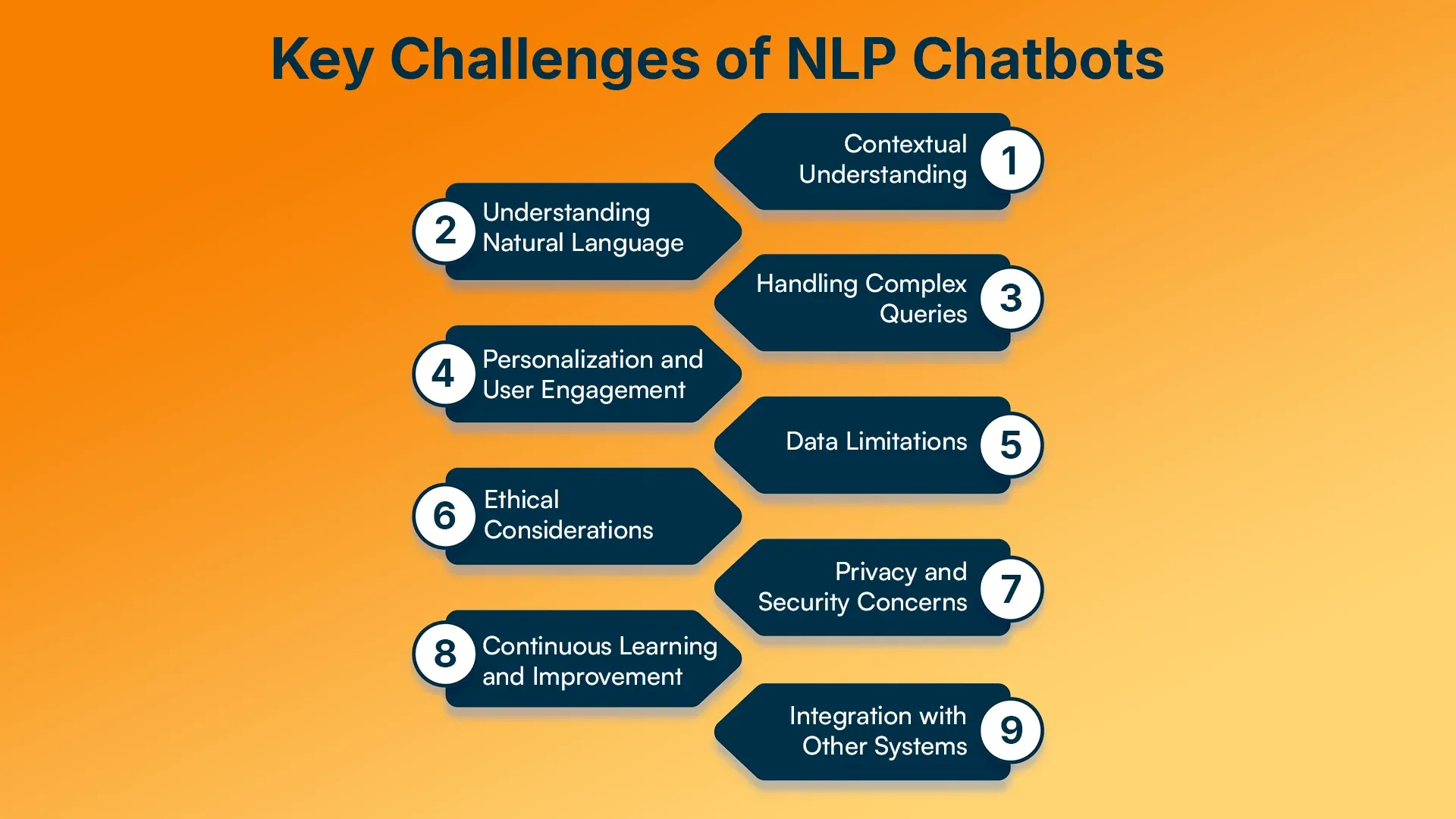
1. Contextual Understanding
Maintaining context across long conversations remains difficult. Bots can lose track of earlier messages and give irrelevant replies.
2. Understanding Natural Language
Human language is messy, full of slang, typos, and ambiguity. Even the best models sometimes misinterpret meaning.
3. Handling Complex Queries
Multi-step problems or open-ended questions can stump even advanced bots, requiring careful design and training.
4. Personalization and User Engagement
Delivering tailored responses and keeping users engaged over time requires sophisticated data handling and strategy.
5. Data Limitations
Chatbots are only as good as the data they’re trained on. Limited or biased datasets can lead to poor performance or unintended bias.
6. Ethical Considerations
Developers must ensure fairness, avoid reinforcing stereotypes, and maintain transparency about AI usage.
7. Privacy and Security Concerns
Since chatbots often process sensitive information, strong encryption and compliance with regulations like GDPR or HIPAA are essential.
8. Continuous Learning and Improvement
To stay relevant, NLP chatbots must constantly learn from new interactions and be updated with fresh data.
9. Integration with Other Systems
Connecting a chatbot to legacy systems or multiple third-party platforms can be technically complex and time-consuming.
What is the Future of NLP Chatbots?
Artificial intelligence and its subsets have evolved a lot in the last 5 years and a lot of research and development is currently going on for it, hence it is very important to know what the future and trend of NLP Chatbots or Agents is going to be.
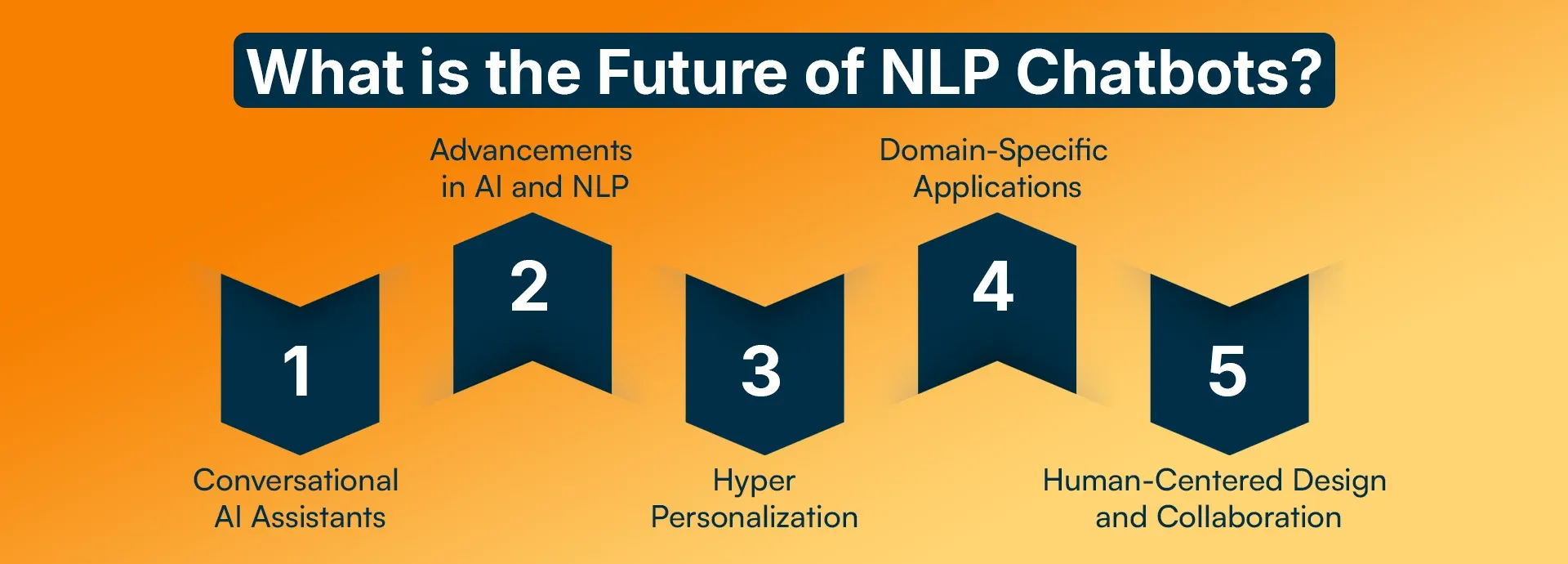
1. Conversational AI Assistants
Expect NLP chatbots to evolve into full-fledged AI assistants capable of handling complex tasks with near-human understanding.
2. Advancements in AI and NLP
New transformer models and deep learning techniques will continue to improve contextual accuracy and fluency.
3. Hyper-Personalization
Bots will proactively anticipate needs and deliver customized interactions based on user behavior and preferences. Multimodal Interaction Future chatbots will seamlessly combine text, voice, images, and even gestures for a richer user experience.
4. Domain-Specific Applications
Specialized chatbots for healthcare, finance, education, and law will emerge, offering expert-level knowledge in their niches. Integration with IoT and Smart Devices Imagine chatting with your smart home or car directly, NLP bots will act as natural interfaces for IoT ecosystems.
5. Human-Centered Design and Collaboration
The next generation of chatbots will focus on empathy and collaboration, working alongside humans rather than replacing them. Ethical AI and Responsible Design Responsible development, covering bias mitigation, transparency, and data privacy, will be critical for widespread adoption.
Conclusion
NLP Chatbots in 2025 are not just any kind of experimental gadgets or chatbots, rather they have become the soul of artificial intelligence, because no matter how advanced Artificial Intelligence or machine learning becomes, if humans and AI cannot converse naturally with each other, then such advanced technology will not be accessible to everyone, and this communication barrier has been fixed very well by NLP.
That is why you will find NLP integrated devices, softwares and machines in airports, banks, hospitals and even in local shops. Many experts say that NLP or automation saves time, cost and productivity of business operations. Apart from this, if you have to deploy NLP or a custom software solution in your business then you should select a repetitive firm like RejoiceHub so that you get long term support.
Frequently Asked Questions
1. Is NLP hard to learn?
If I were to tell you personally, learning NLP isn't difficult, but it does depend heavily on your educational and skill background. Modern frameworks and LLM-powered platforms make it quite easy for developers to build NLP chatbots without requiring a PhD in linguistics.
2. How does an NLP chatbot differ from a regular chatbot?
Regular (rule-based) chatbots follow strict scripts, while NLP chatbots use AI and machine learning to understand user intent and respond naturally to the final response.
3. Are NLP chatbots secure?
Yes, NLP chatbots are secure if they are designed using strong encryption and comply with regulations such as GDPR and HIPAA.
4. Can an NLP chatbot work in multiple languages?
Absolutely, LLMs chatbots like GPT can handle multiple languages, and they can handle most languages globally, which is why NLP is widely used in customer support.
5. What industries benefit most from NLP chatbots?
NLP chatbots are widely used in customer service, healthcare, finance, education, HR, travel, and e-commerce.
6. How do NLP chatbots learn over time?
NLP chatbots use machine learning to improve each interaction, allowing them to refine and recognize intent and deliver quality responses accordingly.
7. What is the biggest challenge in building an NLP chatbot?
Building an NLP chatbot involves several challenges, such as contextual understanding and seamless integration, as failing to achieve these can lead to significant technical hurdles in backend systems.
